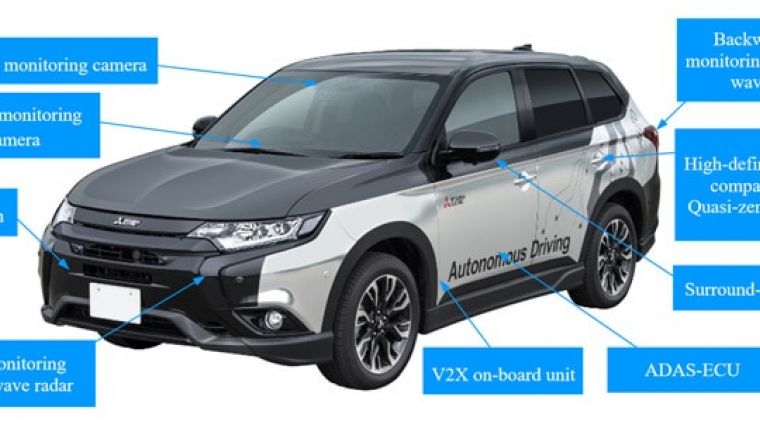Mitsubishi Tests xAUTO Autonomous-driving Vehicle
Since May 2016, Japanese car manufacturer Mitsubishi has been conducting expressway-based field testing of its xAUTO vehicle and related autonomous-driving technologies for self-sensing and network-based driving. The self-sensing driving technology combines various peripheral-sensing technologies, called Diamond Safety, including a forward-monitoring millimetre-wave radar with wide viewing angle, a forward-monitoring camera and a backward side-monitoring millimetre-wave radar.
Its infrastructural driving technology uses high-accuracy 3D mapping in combination with a centimetre-level augmentation service (CLAS) broadcast from the Quasi-Zenith Satellite System (QZSS). Together, Mitsubishi's self-sensing and network-based driving technologies enable autonomous driving with high levels of safety and convenience.
Overview of Field Tests
Autonomous driving tests on expressway
Field tests of the xAUTO and its autonomous driving technologies were carried out on two Japanese expressways ─ the Sanyo Expressway (Kobe junction to Ako interchange) and the Douo Expressway (Shibetsu Kenbuchi interchange to Fukagawa interchange) for more than 300 hours*. The tests confirmed that Mitsubishi’s autonomous driving technologies operate practically under various road conditions, including bad visibility during dense fog and snow.
*Using simulated signals because CLAS from the Quasi-Zenith Satellite System were not yet available.
Utilisation of CLAS from Quasi-Zenith Satellite System
In the world's first field test of CLAS-based autonomous driving on expressway, which took place on 19 September 2017, it was confirmed that this technology has advanced to the practical level. In tunnels and other locations where CLAS reception is difficult, autonomous driving was achieved with high-definition location technology to determine the vehicle's exact position in real-time combined with various sensors that monitored the vehicle's motion, and a forward-monitoring camera.
Future Development
Globalisation of advanced driving-assistance system and autonomous-driving technologies
To enable positioning augmentation when CLAS is not available, Mitsubishi plans to build a worldwide wireless network for centimetre-level positioning compatible with CLAS. Mitsubishi is collaborating in this field with Sapcorda, a German joint-venture formed by Mitsubishi and other companies. Mitsubishi is also collaborating with Dynamic-Map Platform and HERE Technologies to develop high-accuracy 3D mapping for an envisioned global system. Verification tests are planned in Europe and North America.
Further improvement of self-sensing driving technology
Mitsubishi will continue developing its original self-sensing driving technology using millimetre-wave radar and forward-monitoring cameras, focusing on collision avoidance at crosswalks on public roads and safe, convenient autonomous driving on highways and expressways. Efforts will also target vision-based forward-monitoring camera technology in collaboration with Mobileye.
For an overview article on the (geospatial) technologies behind self-driving cars, see here.

Value staying current with geomatics?
Stay on the map with our expertly curated newsletters.
We provide educational insights, industry updates, and inspiring stories to help you learn, grow, and reach your full potential in your field. Don't miss out - subscribe today and ensure you're always informed, educated, and inspired.
Choose your newsletter(s)












